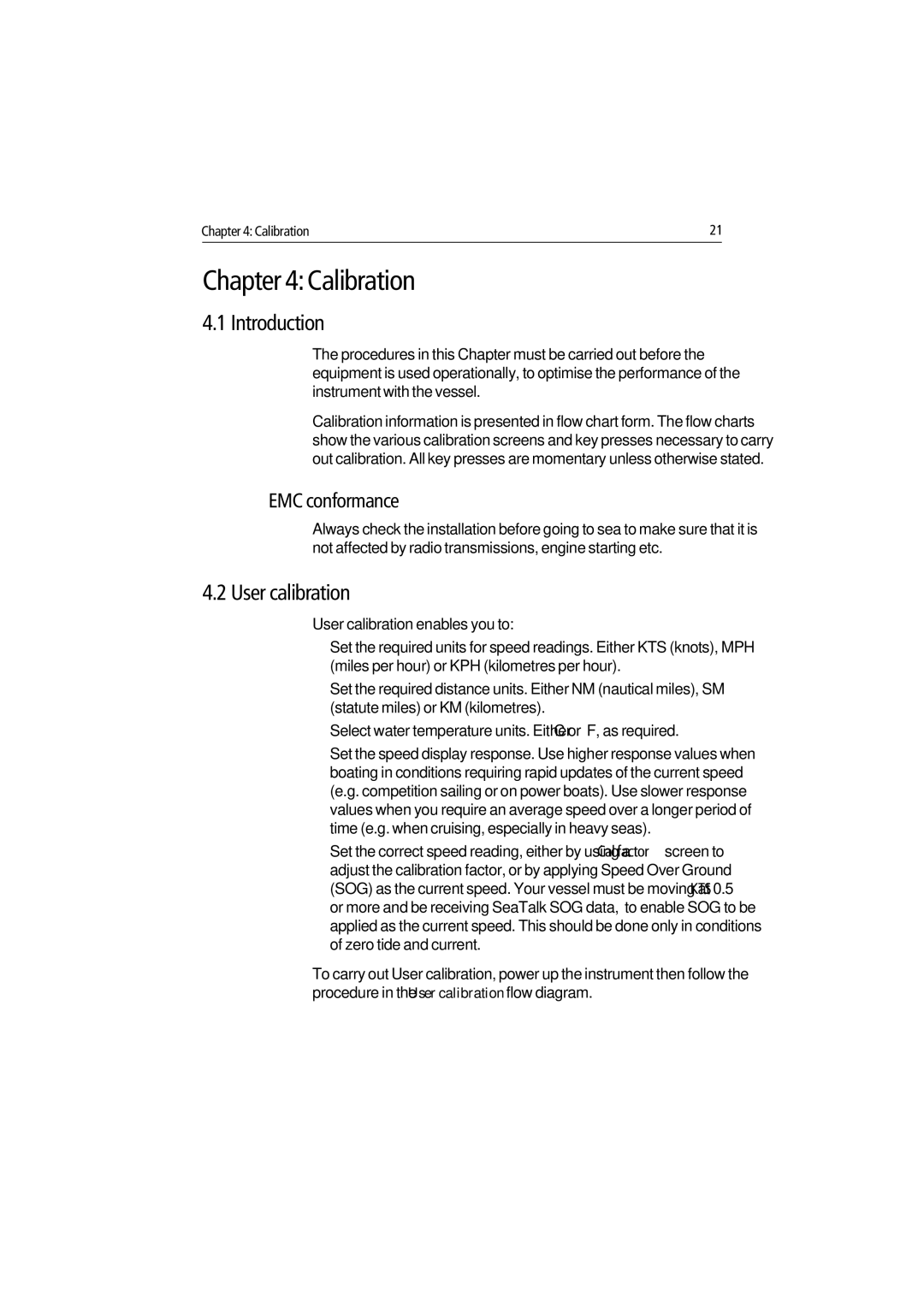Chapter 4: Calibration | 21 |
Chapter 4: Calibration
4.1 Introduction
The procedures in this Chapter must be carried out before the equipment is used operationally, to optimise the performance of the instrument with the vessel.
Calibration information is presented in flow chart form. The flow charts show the various calibration screens and key presses necessary to carry out calibration. All key presses are momentary unless otherwise stated.
EMC conformance
Always check the installation before going to sea to make sure that it is not affected by radio transmissions, engine starting etc.
4.2 User calibration
User calibration enables you to:
•Set the required units for speed readings. Either KTS (knots), MPH (miles per hour) or KPH (kilometres per hour).
•Set the required distance units. Either NM (nautical miles), SM (statute miles) or KM (kilometres).
•Select water temperature units. Either °C or °F, as required.
•Set the speed display response. Use higher response values when boating in conditions requiring rapid updates of the current speed (e.g. competition sailing or on power boats). Use slower response values when you require an average speed over a longer period of time (e.g. when cruising, especially in heavy seas).
•Set the correct speed reading, either by using a Cal factor screen to adjust the calibration factor, or by applying Speed Over Ground (SOG) as the current speed. Your vessel must be moving at 0.5 KTS or more and be receiving SeaTalk SOG data, to enable SOG to be applied as the current speed. This should be done only in conditions of zero tide and current.
To carry out User calibration, power up the instrument then follow the procedure in the User calibration flow diagram.
